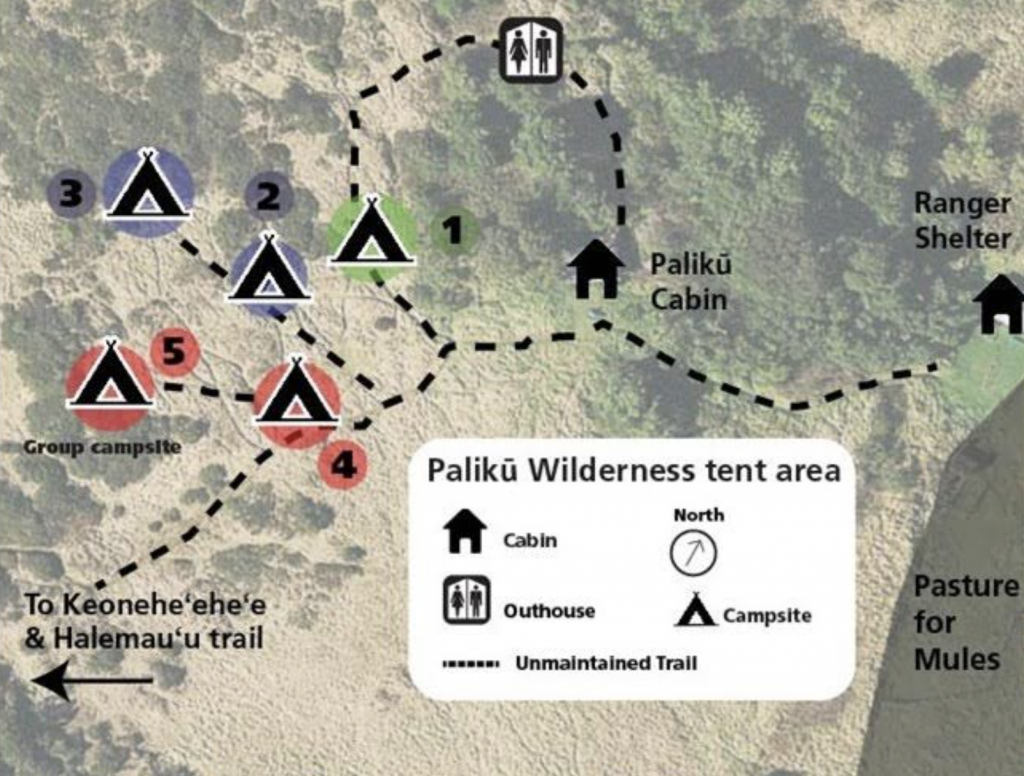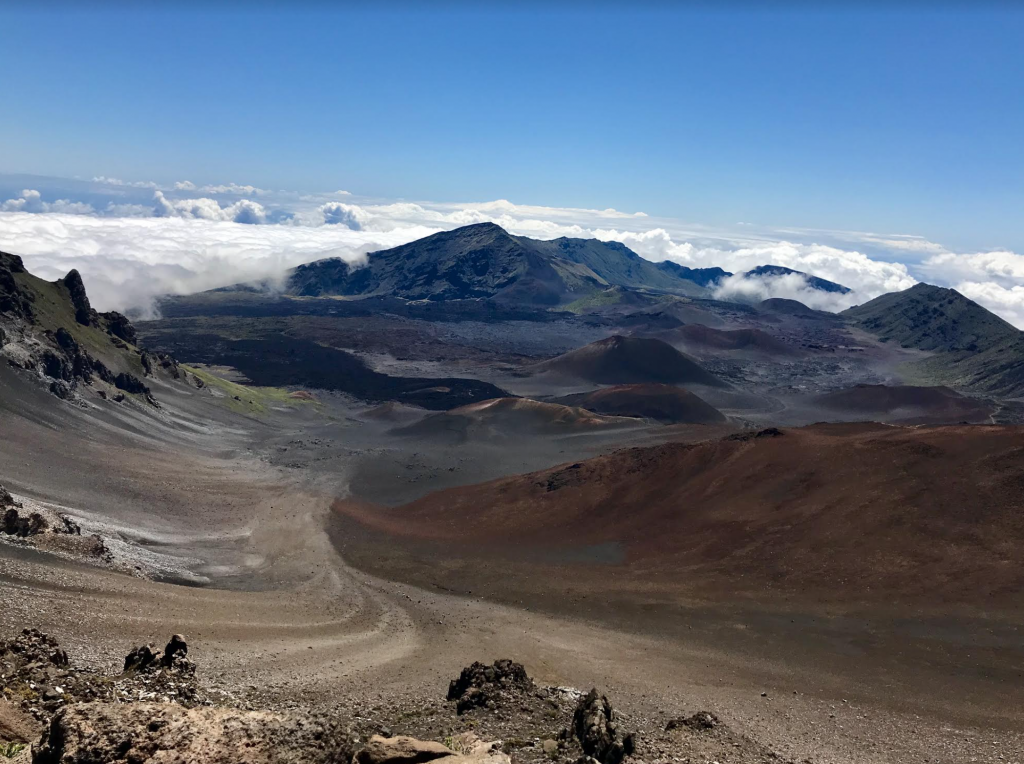New Online Reservation System for Haleakalā Crater Wilderness Campsites

Visitors intending to backpack in Haleakalā National Park will soon be able to reserve Haleakalā Crater wilderness campsites in advance. Reservations for wilderness campsites Palikū and Hōlua will go live on Recreation.gov beginning April 22, 2021 at 7 a.m. Hawaiian Standard Time (HST).
Wilderness campsites previously issued at the Headquarters Visitor Center are moving to this advance reservation system. All drive-up Kīpahulu and Hosmer Grove campgrounds remain closed at this time since Maui county is currently in the “High” Level of Community Transmission according to the Centers for Disease Control.
The new system responds directly to public requests for an easily accessible reservation system for wilderness campsites, prompting a collaborative effort between the National Park Service and Recreation.gov. Visitors will now have the ability to plan ahead with confidence and know they will have a place to stay and camp when they arrive. Additionally, the new system improves flexibility for the visitor experience by allowing campers to start their trip at any time of day. The reservation system will streamline the camping process, allowing park visitors to check the availability of sites in real time and receive immediate confirmation.
Reserve Your Wilderness Campsite in Advance: Visitors wishing to reserve a Crater campsite in the park at Palikū and Hōlua campsites will be able to do so by visiting Recreation.gov beginning April 22, 2021 at 7 am HST. Reservations will be available on a rolling six-month basis thereafter. Palikū and Hōlua reservations cost $8 per night if booking online or $9 per night if booking by phone.
Visitors must create an account on the Recreation.gov website prior to making campsite reservations. Those who already have an account are encouraged to confirm their login and password information. This is the same reservation site to obtain a sunrise reservation in Haleakalā National Park.
Research the Wilderness Campsites in Advance: Hōlua and Palikū campsites are in Haleakalā Crater within the designated wilderness area of the park. Both sites are accessible by backpacking only. All campsite reservation holders must carry all gear and equipment by foot. The campsites are located in remote and primitive locations requiring strenuous hiking with elevation changes from 9,780 feet to a low of 6,380 feet. The Hōlua tent camping area is at 6,940 feet in elevation located in the shrubland near Koʻolau Gap. Hōlua is 3.7 miles one-way down the Halemauʻu Trail or 7.4 miles one-way from the Keoneheʻeheʻe (Sliding Sands) Trailhead. The Palikū tent camping area is at 6,380 feet in elevation on the eastern edge of the Haleakalā Crater near the base of a rainforest cliff. The tent camping areas are reached via a strenuous 9.3 miles one-way hike on the Keoneheʻeheʻe (Sliding Sands) Trail or 10.4 miles one-way on Halemauʻu Trail. Clouds and fog often roll over the top of the cliffs behind Palikū, and rain is common.
Plan for Unpredictable Weather: The wilderness area in Haleakalā Crater is remote and subject to unpredictable weather. Temperatures vary from 40°F to 70°F during the day and 30°F to 50°F at night. Plan for rain at all times of year. If it is stormy, winds can exceed 80 mph with temperatures dropping well below freezing. Collecting of firewood in the park is not permitted.
Filter Your Water: Hōlua and Palikū have non-potable water available for use via water catchment tanks (rainwater collected from metal shelter roofs). This water must be filtered or treated prior to consuming.
Leave No Trace: All hikers are required to pack out everything they pack in. Do not bury your trash or discard it in pit toilets—pack it out. Practice “leave no trace” camping. All fires are prohibited.
Establish a Trip Plan: Cell phone connectivity in the wilderness area of the Haleakalā Crater is not available. Prior to any trip, all backpackers should leave a trip plan with another person that includes the details of the time and locations they plan to hike. Make sure this person understands that should you become lost or injured on the trail, they are your only link to help and should report you overdue if you fail to contact them by a predesignated time. If lost, stay where you are. Use bright colors and reflective materials to attract attention.



















